Intel’s Integrated Graphics Mini-Review: Is Rocket Lake Core 11th Gen Competitive?
by Dr. Ian Cutress on May 7, 2021 10:20 AM EST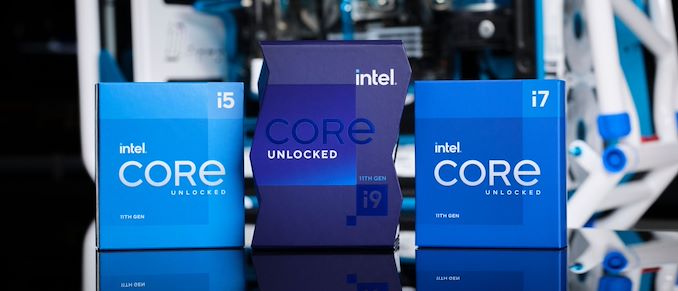
In the last few months we have tested the latest x86 integrated graphics options on the desktop from AMD, with some surprising results about how performant a platform with integrated graphics can be. In this review, we’re doing a similar test but with Intel’s latest Rocket Lake Core 11th Gen processors. These processors feature Intel’s Xe-LP graphics, which were touted as ‘next-generation’ when they launched with Intel’s mobile-focused Tiger Lake platform. However, the version implemented on Rocket Lake has fewer graphics units, slower memory, but a nice healthy power budget to maximize. Lo, Intel set forth for battle.
When a CPU meets GPU
Intel initially started integrating graphics onto its systems in 1999, by pairing the chipset with some form of video output. In 2010, the company moved from chipset graphics to on-board processor graphics, enabling the graphics hardware to take advantage of a much faster bandwidth to main memory as well as a much lower latency. Intel’s consumer processors now feature integrated graphics as the default configuration, with Intel at times dedicating more of the processor design to graphics than to actual cores.
| Intel CPUs: IGP as a % of Die Area | ||||||
| AnandTech | Example | Launched | Cores | IGP | Size | IGP as Die Area % |
| Sandy Bridge | i7-2600K | Jan 2011 | 4 | Gen6 | GT2 | 11% |
| Ivy Bridge | i7-3770K | April 2012 | 4 | Gen7 | GT2 | 29% |
| Haswell | i7-4770K | June 2013 | 4 | Gen7.5 | GT2 | 29% |
| Broadwell | i7-5775C | June 2015 | 4 | Gen8 | GT3e | 48% |
| Skylake | i7-6700K | Aug 2015 | 4 | Gen9 | GT2 | 36% |
| Kaby Lake | i7-7700K | Jan 2017 | 4 | Gen9 | GT2 | 36% |
| Coffee Lake | i7-8700K | Sept 2017 | 6 | Gen9 | GT2 | 30% |
| Coffee Lake | i9-9900K | Oct 2018 | 8 | Gen9 | GT2 | 26% |
| Comet Lake | i9-10900K | April 2020 | 10 | Gen9 | 24 EUs | 22% |
| Rocket Lake | i9-11900K | March 2021 | 8 | Xe-LP | 32 EUs | 21% |
| Mobile CPUs | ||||||
| Ice Lake-U | i7-1065G7 | Aug 2019 | 4 | Gen11 | 64 EUs | 36% |
| Tiger Lake-U | i7-1185G7 | Sept 2020 | 4 | Xe-LP | 96 EUs | 32% |
All the way from Intel’s first integrated graphics to its 2020 product line, Intel was reliant on its ‘Gen’ design. We saw a number of iterations over the years, with updates to the function and processing ratios, with Gen11 featuring heavily in Intel’s first production 10nm processor, Ice Lake.
The latest graphics design however is different. No longer called ‘Gen’, Intel upcycled its design with additional compute, more features, and an extended effort for the design to scale from mobile compute all the way up to supercomputers. This new graphics family, known as Xe, is now the foundation of Intel’s graphics portfolio. It comes in four main flavors:
- Xe-HPC for High Performance Computing in Supercomputers
- Xe-HP for High Performance and Optimized FP64
- Xe-HPG for High Performance Gaming with Ray Tracing
- Xe-LP for Low Power for Integrated and Entry Level
Intel has initially rolled out its LP designs into the market place, first with its Tiger Lake mobile processors, then with its Xe MAX entry level notebook graphics card, and now with Rocket Lake.
Xe-LP, A Quick Refresher
Intel’s LP improves on the previous Gen11 graphics by reorganizing the base structure of the design. Rather than 7 logic units per execution unit, we now have 8, and LP’s front-end can dispatch up two triangles per clock rather than one. The default design of LP involves 96 execution units, split into a centralized ‘slice’ that has all the geometry features and fixed function hardware, and up to 6 ‘sub-slices’ each with 16 logic units and 64 KiB of L1 cache. Each variant of LP can then have up to 96 execution units in a 6x16 configuration.
Execution units now work in pairs, rather than on their own, with a thread scheduler shared between each pair. Even with this change, each individual execution unit has moved to an 8+2 wide design, with the first 8 working on FP/INT and the final two on complex math. Previously we saw something more akin to a 4+4 design, so Intel has rebalanced the math engine while also making in larger per unit. This new 8+2 design actually decreases the potential of some arithmetic directly blocking the FP pipes, improving throughput particularly in graphics and compute workloads.
The full Tiger Lake LP solution has all 96 execution units, with six sub-slices each of 16 execution units (6x16), Rocket Lake is neutered by comparison. Rocket Lake has 4 sub-slices, which would suggest a 64 execution unit design, but actually half of those EUs are disabled per sub-slice, and the final result is a 32 EU implementation (4x8). The two lowest Rocket Lake processors have only a 3x8 design. By having only half of each sub-slide active, this should in theory give more cache per thread during operation, and provides less cache pressure. Intel has enabled this flexibility presumably to provide a lift in edge-case graphics workloads for the parts that have fractional sub-slices enabled.
Xe-LP also comes with a revamped media engine. Along with a 12-bit end-to-end video pipeline enabling HDR, there is also HEVC coding support and AV1 decode, the latter of which is a royalty-free codec providing reported similar or better quality than HEVC. Intel is the first desktop IGP solution to provide AV1 accelerated decode support.
Rocket Lake Comparisons
For this review, we are using the Core i9-11900K, Core i7-11700K, and Core i5-11600K. These three are the highest power processors in Intel’s Rocket Lake lineup, and as a result they support the highest configuration of LP graphics that Intel provides on Rocket Lake. All three processors have a 4x8 configuration, and a turbo frequency up to 1300 MHz.
| Intel Integrated Graphics | |||||
| AnandTech | Core i9 11900K |
Core i7 11700K |
Core i5 11600K |
Core i9 10900K |
|
| Cores | 8 / 16 | 8 / 16 | 6 / 12 | 10 / 20 | |
| Base Freq | 3500 MHz | 3600 MHz | 3900 MHz | 3700 MHz | |
| 1T Turbo | 5300 MHz | 5000 MHz | 4900 MHz | 5300 MHz | |
| GPU uArch | Xe-LP | Xe-LP | Xe-LP | Gen 11 | |
| GPU EUs | 32 EUs | 32 EUs | 32 EUs | 24 EUs | |
| GPU Base | 350 MHz | 350 MHz | 350 MHz | 350 MHz | |
| GPU Turbo | 1300 MHz | 1300 MHz | 1300 MHz | 1200 MHz | |
| Memory | DDR4-3200 | DDR4-3200 | DDR4-3200 | DDR4-2933 | |
| Cost (1ku) | $539 | $399 | $262 | $488 | |
Our comparison points are going to be Intel’s previous generation Gen11 graphics, as tested on the Core i9-10900K which has a 24 Execution Unit design, AMD’s latest desktop processors, a number of Intel’s mobile processors, and a discrete graphics option with the GT1030.
In all situations, we will be testing with JEDEC memory. Graphics loves memory bandwidth, and CPU memory controllers are slow by comparison to mobile processors or discrete cards; while a GPU might love 300 GB/s from some GDDR memory, a CPU with two channels of DDR4-3200 will only have 51.2 GB/s. Also, that memory bank needs to be shared between CPU and GPU, making it all the more complex. The use case for most of these processors on integrated graphics will often be in prebuilt systems designed to a price. That being said, if the price of Ethereum keeps increasing, integrated graphics might be the only thing we have left.
The goal for our testing comes in two flavors: Best Case and Best Experience. This means for most benchmarks we will be testing at 720p Low and 1080p Max, as this is the area in which integrated graphics is used. If a design can’t perform at 720p Low, then it won’t be going anywhere soon, however if we can achieve good results at 1080p Max in certain games, then integrated graphics lends itself as a competitive option against the basic discrete graphics solutions.
If you would like to see the full CPU review of these Rocket Lake processors, please read our review:
Intel Rocket Lake (14nm) Review: Core i9-11900K, Core i7-11700K, and Core i5-11600K
Pages In This Review
- Analysis and Competition
- Integrated Graphics Gaming
- Conclusions and Final Words


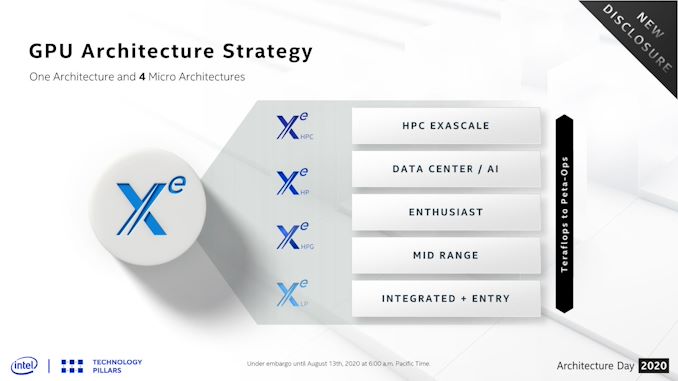
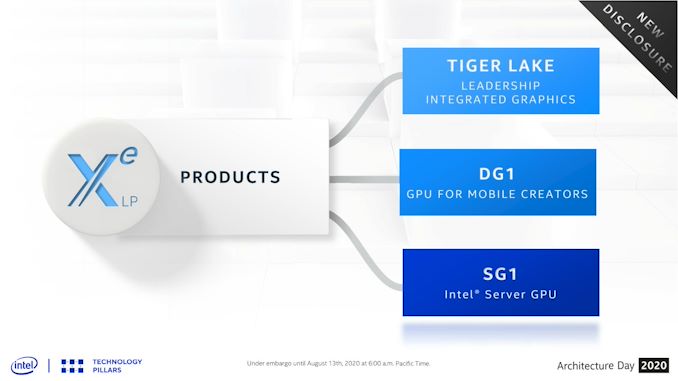
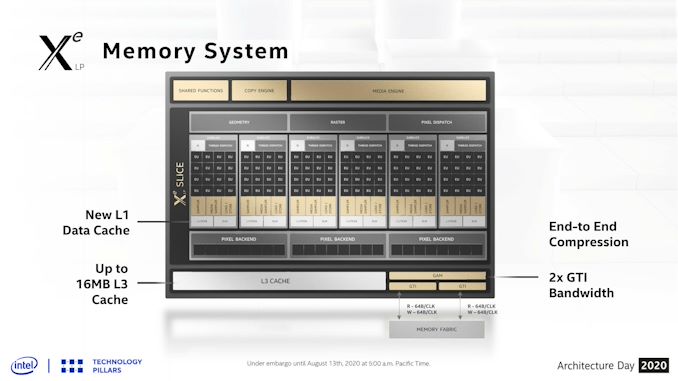
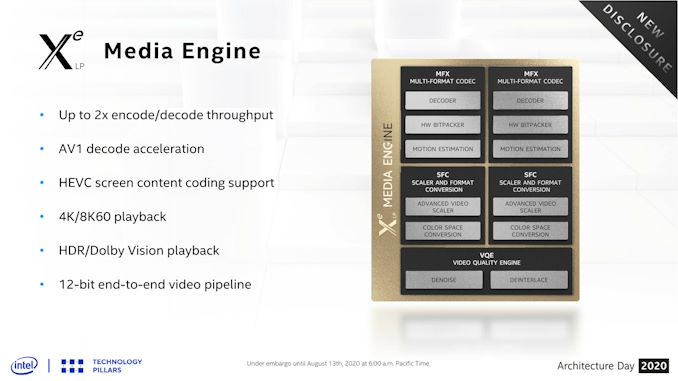








165 Comments
View All Comments
Linustechtips12#6900xt - Saturday, May 8, 2021 - link
Do you realize they have pre-made orders from Sony/Microsoft they have to fufil???, and any silicon that goes to anything is great they are selling everthing they have they can't make enough of ANYTHING! more tsmc but still!, I understand you're want to build a pc right now but your going to have to wait, if you want to play games either buy a pre-built and get a 3000 series gpu or buy a console from scalpers either one is a decent option tho I would tend to go the way of prebuilts as funding the fucktardistans of scalpers is not a great idea.Qasar - Saturday, May 8, 2021 - link
Linustechtips12#6900xt, ignore the jian,the only thing he does on here, is find ways to bash amd in one way or another. most of what he posts, are just rants, no facts, just FUD.mode_13h - Sunday, May 9, 2021 - link
> Stop making console socs AMD so you'll have more wafers for stuff that makes NET INCOME.I'm not convinced they're actually buying these wafers, rather than Sony and MS. Even if they are, I'm sure they're contractually obligated by Sony and MS and don't have the option to simply divert console-designated wafers to be used for other AMD products.
I don't understand why people keep saying otherwise. It's like they don't understand how business works.
Oxford Guy - Sunday, May 9, 2021 - link
None of that matters in the big picture.In the big picture, AMD is actively working with Sony and MS against PC gamers. PC gamers need to wise up.
This also means it's helping Nvidia to keep prices high, which means there is a (presumably) legal form of collusion. Letting Nvidia set prices keeps AMD happy because it gets to raise prices, too. The high prices for PC gaming make consoles seem more attractive, even though the high prices are due to the existence of the consoles.
Nvidia is also, to a smaller but still significant extent, actively undermining PC gaming via its effort to prop up the Switch (a third artificial parasitic x86 walled garden).
Bottom line is that all of this is due to inadequate competition. Both AMD and Nvidia are setting record profits/earnings/whatever by not selling GPUs to gamers.
Qasar - Monday, May 10, 2021 - link
and none of this matters unless you post some links to show proof of your BS console scam conspiracy theory. as i cant remember if you posted anything proving this in all of your posts about it, there fore, is just your opinion, nothing more.as i said before, you sure come across as one angry person in most of your posts.
mode_13h - Monday, May 10, 2021 - link
Unless he was a liberal arts major, none of these arguments would pass muster at a place like Oxford.mode_13h - Monday, May 10, 2021 - link
> In the big picture, AMD is actively working with Sony and MS against PC gamers.How? Because they're collaborating in probably not more than a couple % of TSMC's fab capacity being used for console chips?
And what do you think would happen if AMD *didn't* design console chips? It'd just be someone else.
> The high prices for PC gaming make consoles seem more attractive, even though the high prices are due to the existence of the consoles.
In the same way a nearby farmer has less water for crop irrigation because I'm brushing my teeth and flushing my toilet.
> Nvidia is also, to a smaller but still significant extent, actively undermining PC gaming via its effort to prop up the Switch
The Switch's SoC is manufactured on TSMC 16 nm. So, that's not competing with any current CPU or GPU for fab capacity. Also, it's a pretty small SoC.
> Bottom line is that all of this is due to inadequate competition.
Bottom line is that there's a fab capacity crunch, and what you should *really* be raging at is crypto mining and the pandemic.
Spunjji - Monday, May 10, 2021 - link
"In the same way a nearby farmer has less water for crop irrigation because I'm brushing my teeth and flushing my toilet."Nailed it.
Spunjji - Monday, May 10, 2021 - link
"AMD is actively working with Sony and MS against PC gamers. PC gamers need to wise up."🙄
"The high prices for PC gaming make consoles seem more attractive, even though the high prices are due to the existence of the consoles."
---citations desperately needed---
"Nvidia is also, to a smaller but still significant extent, actively undermining PC gaming via its effort to prop up the Switch (a third artificial parasitic x86 walled garden)."
Amazing. Switch isn't x86, consoles have always been walled gardens BY DEFINITION (it's the entire point, and it's a good thing in that context) and the Switch is in *no conceivable way* a direct competitor to PC gaming.
"Both AMD and Nvidia are setting record profits/earnings/whatever by not selling GPUs to gamers."
They'd make even more money if they could also sell GPUs to gamers. They can't, because they can't make enough of them.
Fulljack - Tuesday, May 11, 2021 - link
Switch is using Arm64, not x86. do you even know what you're talking about?